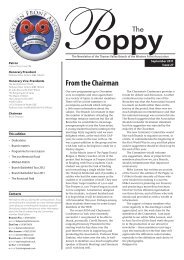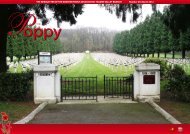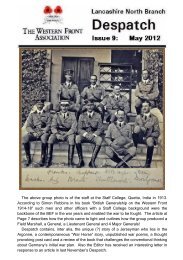east_kent_winter_ 2012.pdf - The Western Front Association
east_kent_winter_ 2012.pdf - The Western Front Association
east_kent_winter_ 2012.pdf - The Western Front Association
You also want an ePaper? Increase the reach of your titles
YUMPU automatically turns print PDFs into web optimized ePapers that Google loves.
would shift in favour of the Allies in August. Germany launched "Michael" in March 1918 with a force larger<br />
than the entire BEF by the release of troops from the Eastern <strong>Front</strong>. British troops fought hard but the offensive<br />
almost destroyed Gough's Fifth Army. Lloyd George ordered Haig to sack Gough in April. Haig offered to<br />
resign. Lloyd George wanted to accept Haig’s resignation but other ministers thought there was no obvious<br />
successor at such a crucial stage in the fighting. Haig’s position was further weakened when Lord Milner<br />
replaced Haig’s ally Lord Derby as Secretary of State for War. In July and August the Germans were defeated at<br />
the Second Battle of the Marne, and at Amiens followed by mass surrenders of German troops.<br />
In 1919 Haig served as C-in-C Home Forces insisting that the Army be kept in reserve, not used for policing.<br />
His military career ended in January 1920 and Haig devoted the rest of his life to the welfare of ex-servicemen.<br />
He was instrumental in setting up the Haig Fund and the Haig Homes to ensure they were properly housed.<br />
Haig died in January 1928 and was given a state funeral. After a service at Westminster Abbey, the body lay in<br />
state for three days at St Giles Cathedral. Haig was buried at Dryburgh Abbey in the Scottish borders, his grave<br />
marked by a standard CWGC gravestone. He did not write any memoirs but his diaries have been published<br />
and edited by Prof Gary Sheffield. LP<br />
Major General Sir Fabian Arthur Goulstone Ware KCVO, KBE, CB, CMG<br />
<strong>The</strong> founder of the Imperial War Graves Commission, now called the Commonwealth War Graves<br />
Commission attempted to join the British Army in August 1914 but was rejected because he was too<br />
old. Instead he obtained command of a mobile ambulance unit provided by the British Red Cross. He<br />
noticed that there was no official mechanism for marking and recording the graves of those killed so<br />
he set up an organisation to do this, and in 1915 both he and his organisation were transferred from<br />
the Red Cross to the Army. By May 1916 the new Graves Registration Commission had over 50,000<br />
graves registered. With the help of Edward, Prince of Wales, in 1917, Ware submitted a<br />
memorandum on the fate of the graves after the war to the Imperial War Conference. On 21 May<br />
1917, the Imperial War Graves Commission was created by a Royal Charter, with the Prince of<br />
Wales as its President and Ware as its Vice-Chairman until his retirement in 1948.<br />
John Websper took this photo in Gloucester Cathedral<br />
In 1937 Ware published an account of the work of the commission called <strong>The</strong> Immortal Heritage. In<br />
1939 he was appointed Director of Graves Registration and Enquiries at the War Office, whilst<br />
continuing in his role as Vice-Chairman of the Commission. Sir Fabian is buried in Amberley Holy<br />
Trinity Churchyard in Gloucestershire. His grave has a CWGC-style headstone and is maintained by<br />
the commission. <strong>The</strong>re are memorial tablets in the Warrior's Chapel at Westminster Abbey and in<br />
Gloucester Cathedral.



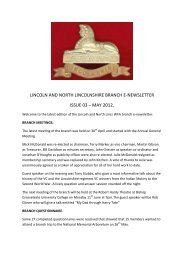
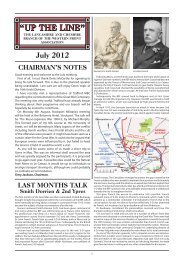


![Fromelles Australian Working List[1].pdf - The Western Front ...](https://img.yumpu.com/29972632/1/184x260/fromelles-australian-working-list1pdf-the-western-front-.jpg?quality=85)
